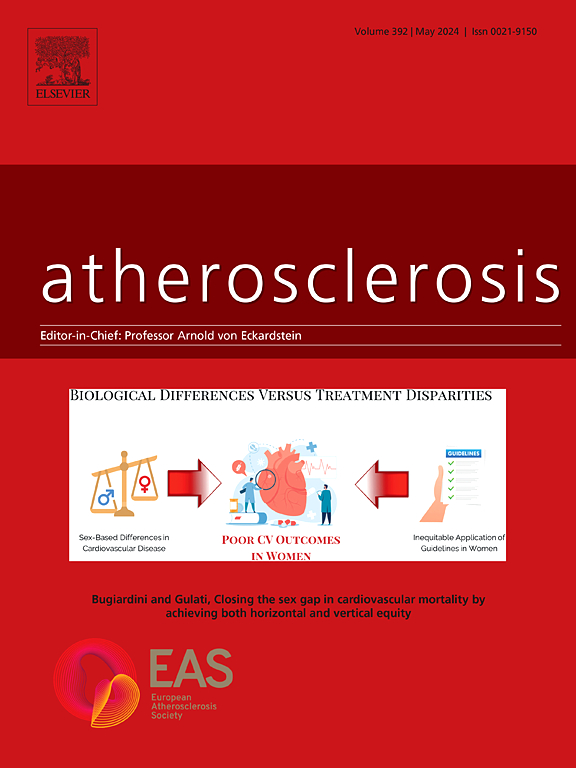Cardiovascular risk posed by the exposome
IF 4.9
2区 医学
Q1 CARDIAC & CARDIOVASCULAR SYSTEMS
引用次数: 0
Abstract
Chronic non-communicable diseases (NCDs) account for 2/3 of global deaths annually, primarily due to an aging population and external risk factors such as air/water/soil pollution, traffic noise, mental stress, and climate change emanating from the environment. These factors contribute to premature deaths and loss of healthy life years, as reflected by disability-adjusted life years. The exposome concept was proposed 16 years ago as a new research field to investigate environment-health associations, also by considering the underlying pathophysiological pathways. The exposome describes lifelong environmental exposures, besides pollutants also socioeconomic and lifestyle factors, aiming to explain the associated diseases and deaths. The exposome can be divided into the specific and general external environment and further subcategories such as organ-specific exposomes as well as spatially and temporally restricted pollutomes. The exposome also shows considerable interaction with genetic predisposition and pre-established chronic diseases, characteristics of the vulnerable groups. The present overview provides background information on the impact of the environment on health and disease by considering recent data of the Global Burden of Disease Study. We also explain the exposome concept with the help of selected studies, briefly describe how the exposome is measured, and discuss biomarkers identified by exposomic research and their impact on the development and progression of atherosclerosis. Major pathophysiological pathways comprise exacerbated stress hormone signaling, oxidative stress, inflammation and circadian rhythm dysregulation promoting impairment of cardiometabolic function. The present overview highlights the relevance of the exposome for future health research and preventive medicine, especially concerning cardiovascular diseases and therapy.

暴露者造成的心血管风险
慢性非传染性疾病每年占全球死亡人数的三分之二,主要是由于人口老龄化和外部风险因素,如空气/水/土壤污染、交通噪音、精神压力和环境引起的气候变化。正如残疾调整生命年所反映的那样,这些因素导致过早死亡和健康生命年的减少。暴露概念是16年前提出的,作为一个新的研究领域来研究环境与健康之间的联系,也考虑了潜在的病理生理途径。暴露量描述了终生的环境暴露,除了污染物,还有社会经济和生活方式因素,旨在解释相关的疾病和死亡。暴露体可分为特定和一般外部环境以及诸如器官特异性暴露体以及受空间和时间限制的污染物等进一步的子类别。暴露体也显示出与遗传易感性和预先建立的慢性疾病,脆弱群体的特征相当大的相互作用。本综述通过考虑全球疾病负担研究的最新数据,提供了关于环境对健康和疾病影响的背景资料。我们还通过选定的研究解释了暴露体的概念,简要描述了如何测量暴露体,并讨论了暴露体研究确定的生物标志物及其对动脉粥样硬化的发展和进展的影响。主要的病理生理途径包括加剧的应激激素信号,氧化应激,炎症和促进心脏代谢功能损害的昼夜节律失调。本综述强调了暴露体对未来健康研究和预防医学,特别是心血管疾病和治疗的相关性。
本文章由计算机程序翻译,如有差异,请以英文原文为准。
求助全文
约1分钟内获得全文
求助全文
来源期刊

Atherosclerosis
医学-外周血管病
CiteScore
9.80
自引率
3.80%
发文量
1269
审稿时长
36 days
期刊介绍:
Atherosclerosis has an open access mirror journal Atherosclerosis: X, sharing the same aims and scope, editorial team, submission system and rigorous peer review.
Atherosclerosis brings together, from all sources, papers concerned with investigation on atherosclerosis, its risk factors and clinical manifestations. Atherosclerosis covers basic and translational, clinical and population research approaches to arterial and vascular biology and disease, as well as their risk factors including: disturbances of lipid and lipoprotein metabolism, diabetes and hypertension, thrombosis, and inflammation. The Editors are interested in original or review papers dealing with the pathogenesis, environmental, genetic and epigenetic basis, diagnosis or treatment of atherosclerosis and related diseases as well as their risk factors.
 求助内容:
求助内容: 应助结果提醒方式:
应助结果提醒方式:


